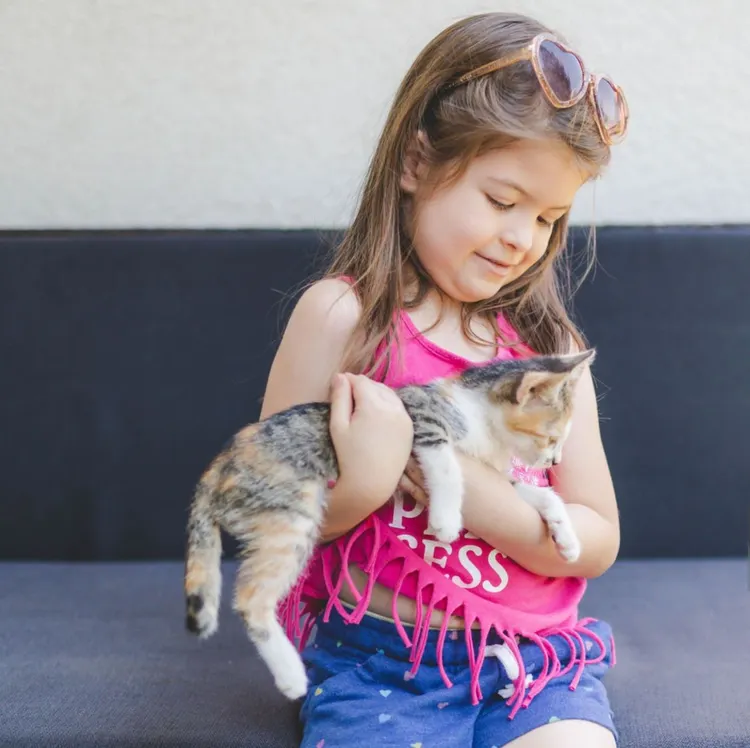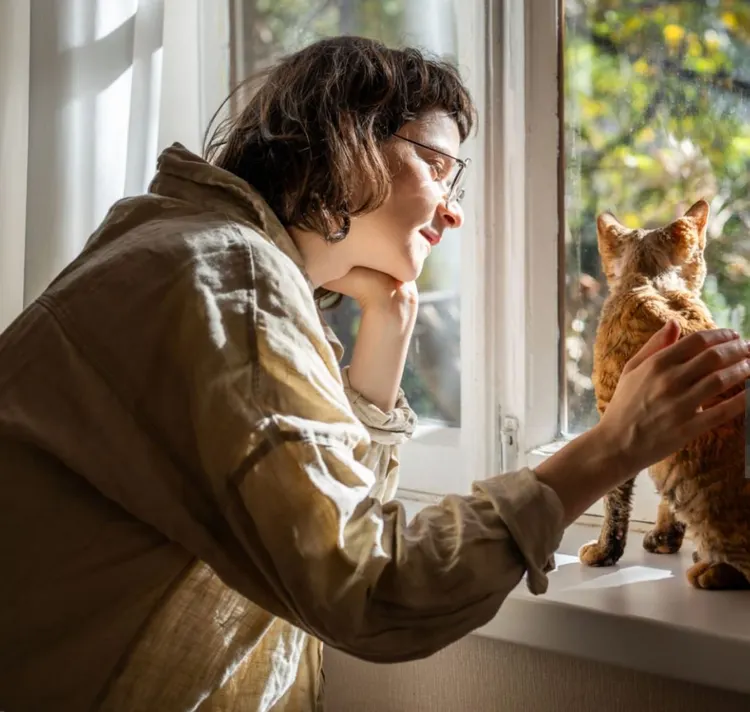Do you ever look at your cat and wonder why they seem smaller than other cats? While many cats grow into an average size, some stay smaller due to genetics, health conditions, or other environmental factors. A small cat may still be perfectly healthy, but understanding the reasons behind your cat’s size can help ensure they live a happy, healthy life. In this post, we’ll explore common reasons for small cat size, when to be concerned, and how to care for a smaller feline.
Common Reasons for a Small Cat Size
Several factors can influence a cat’s size, from its genetic makeup to its environment during early growth. Here’s a breakdown of some of the most common reasons why your cat might be smaller than average:
1. Genetics and Small Breeds
Certain cat breeds are naturally smaller than others due to genetics. If your cat belongs to one of these breeds, their small size is likely a result of breed characteristics.
- Singapura: Known as the smallest domestic cat breed, Singapuras weigh between 4 to 8 pounds on average. These cats are playful and affectionate, despite their tiny stature.
- Munchkin: Munchkin cats are famous for their short legs, caused by a genetic mutation. They usually weigh around 5 to 9 pounds. While they appear smaller, their size doesn’t hinder their ability to play or explore.
- Cornish Rex: The Cornish Rex is another breed that stays smaller, with a slim build and lightweight frame. Adult Cornish Rex cats typically weigh between 6 to 10 pounds.
If your cat belongs to one of these breeds, their small size is likely nothing to worry about. Genetics can have a big influence on a cat’s size, and smaller breeds are simply built that way.
2. Age and Development
Not all cats grow at the same rate. Some kittens grow quickly and reach their full size within the first year, while others may take longer. If your cat is still young, they might just need more time to grow into their adult size. Kittens generally experience their most rapid growth during the first six months, but some cats continue to grow until they are 18 months old.
On the other hand, if your cat experienced malnutrition or poor conditions during early development, it could have affected their growth. Cats need a balanced diet rich in essential nutrients for proper growth. Kittens that suffer from malnutrition may remain small or underweight, even as they reach adulthood.
3. Health Conditions That Can Affect Growth
Sometimes, a cat’s size is influenced by underlying health conditions. These conditions can stunt growth or cause other problems that impact a cat’s overall size and weight. Here are a few health issues to consider:
a) Parasites or Infections
Cats infected with intestinal parasites, such as roundworms or tapeworms, may have difficulty absorbing nutrients from their food. This can lead to stunted growth or weight loss, particularly in kittens. Common signs of parasitic infection include diarrhea, vomiting, and a distended belly.
In addition to parasites, chronic infections or illnesses can hinder growth. For example, feline leukemia virus (FeLV) or feline immunodeficiency virus (FIV) can affect a cat’s immune system and overall health, leading to weight loss or smaller size. If your cat is smaller than average and seems ill or lethargic, a veterinary checkup is essential to rule out infections.
b) Hormonal Imbalances
Certain hormonal disorders can also affect a cat’s growth. Hypothyroidism, for instance, occurs when the thyroid gland does not produce enough thyroid hormone, which regulates metabolism. This can lead to symptoms like lethargy, weight gain, and poor coat condition. While hypothyroidism is rare in cats, it’s more common in older cats and may contribute to small size or slow growth.
Similarly, growth hormone deficiencies are uncommon but can result in smaller-than-average cats. A cat with a deficiency in growth hormone may have a shorter, more compact body structure compared to other cats of the same age.

When to Be Concerned About a Small Cat
While some cats are naturally small, it’s important to monitor your cat’s overall health and behavior to determine if their size might be a sign of something more serious. Here are some signs to watch out for:
- Poor appetite: A cat that isn’t eating enough may not be getting the nutrients needed for healthy growth. Monitor your cat’s eating habits and consult a vet if they seem disinterested in food.
- Frequent illness: If your cat seems to be getting sick often or has recurrent infections, this could indicate an underlying health issue that is affecting their growth.
- Delayed growth beyond kittenhood: If your cat is more than a year old and still hasn’t reached a normal size, it’s worth consulting a veterinarian to rule out health issues or nutrient deficiencies.
Caring for a Smaller Cat
If your cat is smaller than average, whether due to breed, health, or other factors, they may require special care to ensure they thrive. Here are some practical tips for caring for a smaller cat:
1. Feed a High-Quality Diet
Proper nutrition is essential for any cat, but it’s especially important for smaller cats that may have specific dietary needs. Look for high-quality cat food with a good balance of protein, healthy fats, and fiber to support overall health. Avoid fillers and artificial ingredients that could lead to nutrient deficiencies.
2. Monitor Their Weight and Growth
Even if your cat is small, they should still maintain a healthy weight for their size. Regular weigh-ins at the vet or at home can help you keep track of any fluctuations in weight, which could be a sign of an underlying health issue. If you notice sudden weight loss, consult a vet immediately.
3. Encourage Exercise
Smaller cats may need more encouragement to stay active, especially if they tire more quickly than larger cats. Provide plenty of stimulating toys and opportunities for play to help keep your cat physically and mentally fit.
4. Regular Vet Checkups
Smaller cats may be more prone to certain health issues, so it’s important to schedule regular veterinary checkups to monitor their health and address any concerns early on. Your vet can also recommend any necessary supplements or treatments to support your cat’s growth and overall well-being.

Eco-Friendly Pet Care Tips for Smaller Cats
Caring for your cat sustainably not only benefits your feline but also helps the planet. Here are a few eco-friendly tips for taking care of your small cat:
- Feed Organic or Sustainable Pet Food: Look for cat food made from sustainably sourced ingredients and organic meats. This reduces the environmental impact of farming and supports better health for your cat.
- Reduce Packaging Waste: Buy pet supplies like food and litter in bulk to cut down on plastic packaging. Consider using reusable or recyclable containers for storage.
- Eco-Friendly Cat Products: Choose biodegradable litter, toys made from recycled materials, and eco-conscious grooming products to reduce your environmental footprint while keeping your cat happy and healthy.
Conclusion
There are many reasons why your cat might be smaller than average, ranging from genetics to health conditions. In most cases, being small doesn’t mean your cat is unhealthy, especially if they belong to a smaller breed. However, it’s important to monitor your cat’s growth and health to ensure they’re thriving. With proper nutrition, regular vet checkups, and a little extra care, your small cat can live a full, happy life. If you’re ever concerned about your cat’s size or overall health, don’t hesitate to reach out to a veterinarian for guidance.



